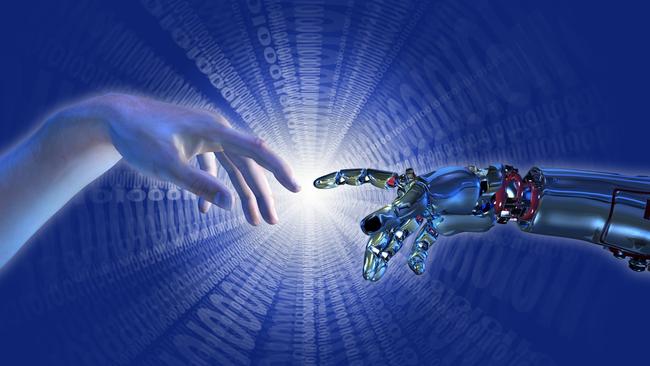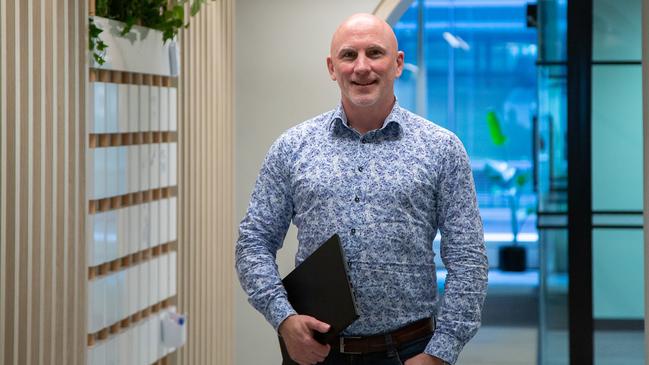How AI chatbots are changing the way Australians work
AI chatbots are becoming very common in Aussie workplaces. But they can’t replace everyone. Here, experts explain why.
SmartDaily
Don't miss out on the headlines from SmartDaily. Followed categories will be added to My News.
Digital humans will become mainstream throughout Aussie workplaces within the next five years, with experts warning job losses are inevitable.
Workers must prepare for the impact of human robots, which will be almost impossible to distinguish from real people, says digital specialist Ryan Jenkins.
“It’s going to be crazy … and I don’t know if we are ready for it,” says Jenkins, co-founder of The Hype Society.
“Some employees in some roles should be worried and should be taking action immediately (to remain employable). Others might just need to open their eyes and remain aware.
“Most people have a low awareness of the pace that (technology) is moving – it’s exciting but sometimes I’m still scared about how fast things are changing.”
PERFECT EMPLOYEE
A digital human combines artificial intelligence with a computer-generated avatar, resulting in a lifelike virtual character that can interact with people and produce realistic human speech and facial expressions in real time.
While they are yet to be as capable or versatile as human employees, experts say digital humans have “clear advantages” for employers.

”Once ‘hired’, they never tire, never complain, never seek a (pay) rise and always follow company policy,” researchers recently wrote in the Harvard Business Review.
Jenkins says those in sales, customer service and administration are most at risk of losing their job through the introduction of digital humans.
“Although tradies are going to become much more valuable,’’ he says. “Robotics is probably not going to take over construction and development of homes as greatly as it will (dominate) the customer service and sales-based industries.”
NOT SUPERHUMAN
Mike Seymour, senior lecturer at the University of Sydney, says digital humans are already used in some workplaces and will have a widespread presence within five years.
Seymour, who co-authored the Harvard Business Review article, agrees there will be some fallout for workers but says it will not be as dire as many predict.

“I’m not for a second thinking we are going to have mass unemployment and dislocation (caused by digital humans),’’ he says.
“(Digital humans) are not super humans. They’re not cleverer than us. There’s a difference between sci-fi and reality.
“You are not going to have some robotic nurse that’s going to walk in and look after your mum – that’s impractical and silly. That’s just fairyland stuff.”
He says digital humans will have significant benefits to the workplace.
In the health sector, trainee doctors will practise procedures and how to communicate worrying medical diagnoses on virtual patients, while digital humans will also have “unlimited patience” to repeat information to those with memory impediments.

In retail, online shoppers will be able to see how clothes look and move on a virtual body similar to their own.
“Within a few years, (digital humans) will just be like (today’s employees) dealing with a computer and it will seem quite boring to talk about it,” Seymour says.
GAME CHANGER
Cian Zoller, human services director at ServiceNow, already uses an AI assistant – the Now Bot – and is not worried by the introduction of digital humans.
“The Now Bot does a lot of the heavy lifting,” he says. “Before we had the Now Bot, I would have at least 60 emails per day requesting simple information.

“Now, these types of requests have reduced to zero and the emails I do receive are about important employee issues that require empathetic, creative or strategic thought – which AI can’t navigate.
“ServiceNow’s AI tools have been a game changer for us. This makes my job a lot more satisfying.”
Whether workers like it or not, the rise of digital humans is coming, says people and behaviour expert Mark Carter, and will not be stopped by “putting your head in the sand”.
“The best thing you can do to remain employable is focus on humanity skills because it will be a long, long, long time before there’s any technology that can compete with the human touch,” he says.
4 TYPES OF VIRTUAL EMPLOYEES
Virtual agent: Serves multiple users to complete specific, one-time tasks, such as computer service.
Virtual assistant: Supports the user regularly with a specific task, such as shopping or physical therapy.
Virtual influencer: Supplies their followers with non-customised content to market products or experiences.
Virtual companion: Develops a close relationship with the user that is based on interaction for its own sake, not the completion of specific tasks, but can assist with tasks such as reminding users to take their medication.
Source: University of Sydney
Originally published as How AI chatbots are changing the way Australians work




